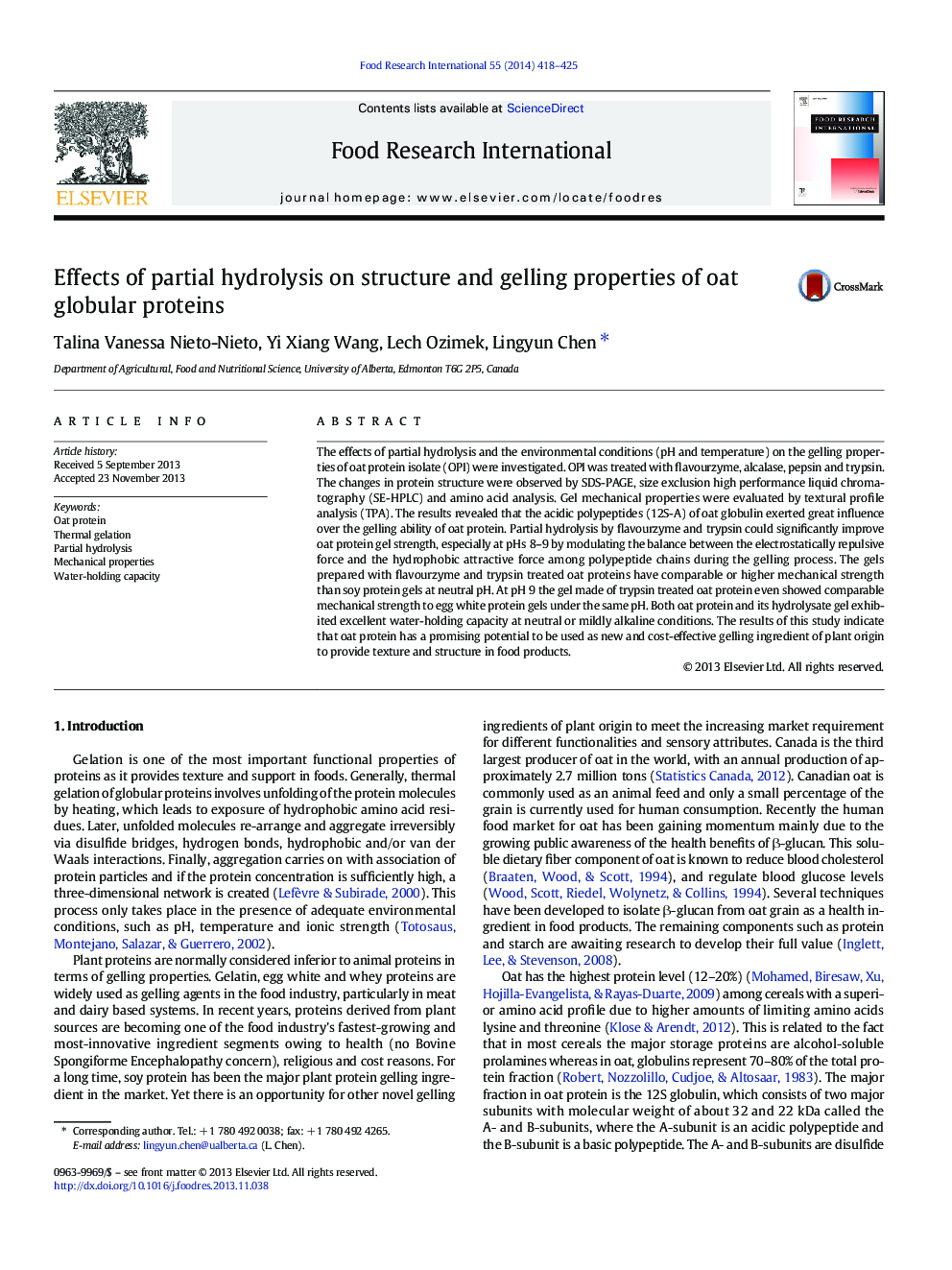| Article ID | Journal | Published Year | Pages | File Type |
|---|---|---|---|---|
| 6397955 | Food Research International | 2014 | 8 Pages |
Abstract
The effects of partial hydrolysis and the environmental conditions (pH and temperature) on the gelling properties of oat protein isolate (OPI) were investigated. OPI was treated with flavourzyme, alcalase, pepsin and trypsin. The changes in protein structure were observed by SDS-PAGE, size exclusion high performance liquid chromatography (SE-HPLC) and amino acid analysis. Gel mechanical properties were evaluated by textural profile analysis (TPA). The results revealed that the acidic polypeptides (12S-A) of oat globulin exerted great influence over the gelling ability of oat protein. Partial hydrolysis by flavourzyme and trypsin could significantly improve oat protein gel strength, especially at pHs 8-9 by modulating the balance between the electrostatically repulsive force and the hydrophobic attractive force among polypeptide chains during the gelling process. The gels prepared with flavourzyme and trypsin treated oat proteins have comparable or higher mechanical strength than soy protein gels at neutral pH. At pH 9 the gel made of trypsin treated oat protein even showed comparable mechanical strength to egg white protein gels under the same pH. Both oat protein and its hydrolysate gel exhibited excellent water-holding capacity at neutral or mildly alkaline conditions. The results of this study indicate that oat protein has a promising potential to be used as new and cost-effective gelling ingredient of plant origin to provide texture and structure in food products.
Related Topics
Life Sciences
Agricultural and Biological Sciences
Food Science
Authors
Talina Vanessa Nieto-Nieto, Yi Xiang Wang, Lech Ozimek, Lingyun Chen,
